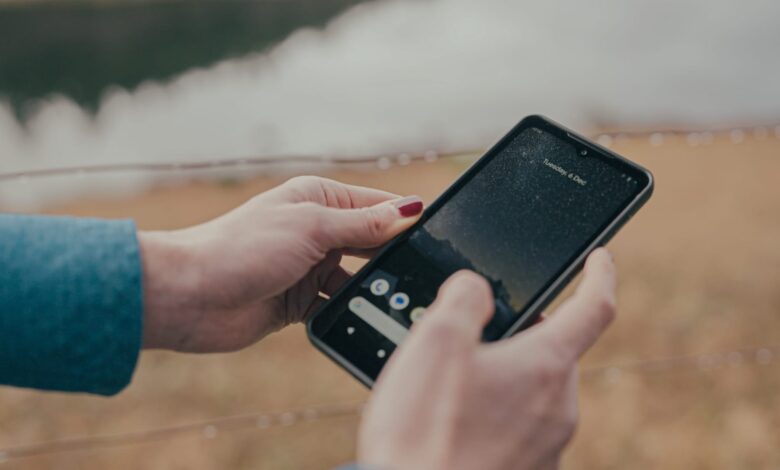Bullitt launches satellite smartphone as mobile space race heats up

British smartphone maker Bullitt on Friday launched a new phone capable of sending text messages through space, joining a crowded race to commercialize satellite-enabled devices.
The phone, which fits into the category of “rugged” durable handsets, comes in two versions: the Caterpillar-branded Cat S75, aimed at the European market and will retail for 599 euros (634, 49 USD) and Motorola Defy 2, serving North America starting at $599.
Both phones have 5G connectivity, 6.6-inch screens, and 5,000 milliampere-hour batteries, which Bullitt says can last up to two days.
With Bullitt’s phone, a message is beamed to geostationary satellites about 22,000 miles from the equator, and then sent back to the network infrastructure on earth before reaching the user’s device.
The user receives the message as a standard SMS. They’ll have to install Bullitt Messenger – the company’s proprietary satellite messaging app – to reply.
Texts take about 10 seconds to go through, in contrast to the near-instant speed of cell phones. The satellite connection is enabled only when the user is out of range of a cellular or Wi-Fi network signal.
News of Bullitt’s new phone comes not long after Apple announced the launch of the iPhone 14, which features satellite emergency services. This feature is available in the US, UK, France, Germany, and Ireland.
Device makers like Apple and chipmakers like Qualcomm are betting on an untapped opportunity to get satellite phones into the hands of people in remote areas beyond the reach of telecom infrastructure ground through.
Connecting to satellites allows messages to reach large swaths of land that cannot be picked up by mobile devices on earth. Cell towers have a more limited range, meaning that if you get too far away from one, you’ll lose signal.
It can be helpful if you are a hiker who is lost on a mountain trail in a remote place or a worker at a remote construction site who needs to contact their boss but cannot access them. mobile data.
Satellite phones have been used for decades, but are not yet in widespread use. Bullitt hopes to change this with his device. Many satellite phones are bulky rectangular objects with large, visible antennas. But Bullitt’s phone looks like a regular smartphone, thanks in part to a satellite-powered chip from Taiwanese semiconductor company MediaTek.
“This is definitely not a gimmick,” Tim Shepherd, Bullitt’s senior director of applications and product marketing, told CNBC.
“Reliable communications beyond the traditional reach of cellular networks is a big problem for many people, and satellite technology is now at the right maturity to solve the problem.”
Bullitt says its phones go a step further than Apple’s, allowing for two-way SMS messaging, as well as an emergency SOS feature the company has developed in partnership with the key event management company. important Focuspoint International.
Prices for Bullitt’s two-way messaging service are set at 4.99 euros for the basic plan with 30 messages a month, 9.99 euros for 125 messages a month and 29.99 euros for 400 messages per month .
For comparison, rival Garmin charges £19 for 10 messages a month, £32 for 60 messages a month and £58 for 250 messages monthly, plus a one-time activation fee of £35.
Apple’s Emergency SOS feature, without activating two-way messaging, is free for two years after activating iPhone 14 or iPhone 14 Pro.
The iPhone maker hasn’t revealed pricing for the service after that period ends.
Bullitt also launched a Bluetooth accessory, the Motorola Defy Satellite Link, that allows any Android or iOS device to connect to the Bullitt Satellite Messenger app, effectively allowing any phone to become a satellite phone. The diamond-shaped device, which retails for $99, will be available in the second quarter.
Ben Wood, lead analyst at CCS Insight, says that Bullitt is targeting a niche market and its solution is better suited to countries with large land areas, like the US and Australia.
“The company is a pioneer in satellite messaging, but competition is approaching,” Wood told CNBC. “That said, the target market for its devices is well-suited to the technology, so it has a lucrative niche to target.”
Bullitt will support satellite coverage in Europe and North America at launch, followed by Australia and New Zealand, Africa and Latin America in mid-2023.
The company was previously responsible for what it called the world’s first thermal imaging smartphone, the Cat S60, in 2016. At the time, the company said it believed the feature would be available. in 50% of smartphones in the next 5 years, a prediction that is not the case. go to the result.




